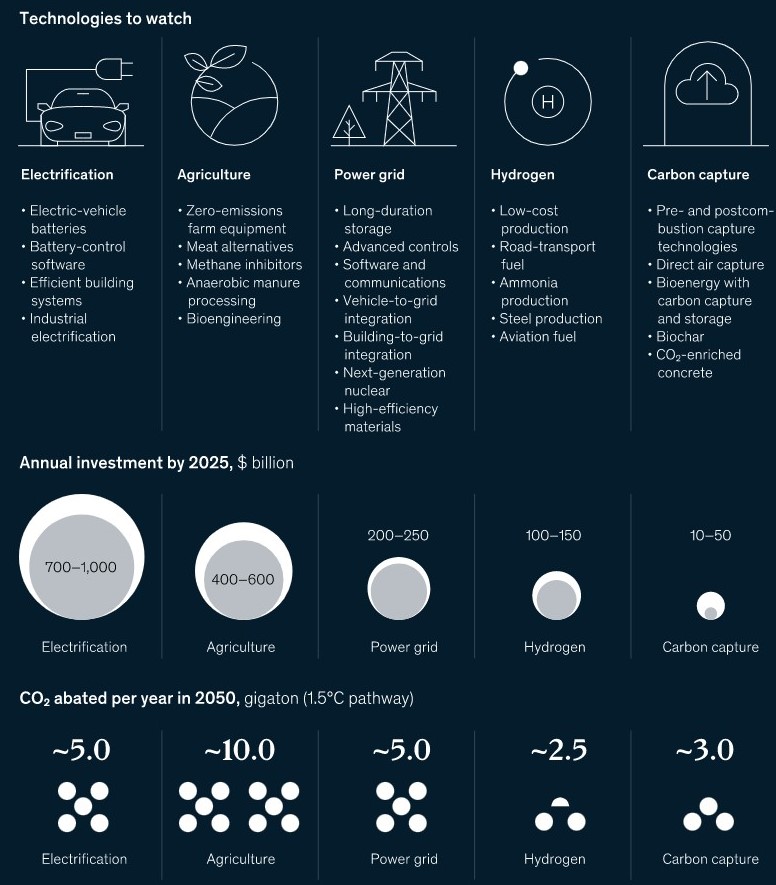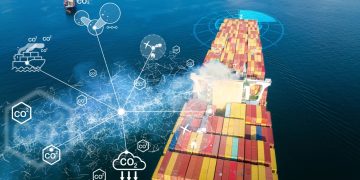McKinsey published its 2021 ESG Report, presenting a framework that outlines specific ambitions and actions that will enable the world to accelerate sustainable and inclusive growth.
Solving the net-zero equation: Nine requirements for a more orderly transition
Net-zero commitments are rising, but the net-zero equation is not yet solved. This can only change if certain interdependent requirements are met with singular resolve, unity, and ingenuity:
#1 The required step-up in spend on physical assets to reach net zero by 2050 would be substantial. Indeed, the report currently estimates this spend to represent an about 60 percent increase relative to today.
#2 The transition calls for collective and global action and entails hard choices. This action would need to be taken in a spirit of unity as the burdens of the transition would not be evenly felt, and, for some stakeholders, the costs would be much more difficult to bear than others.
#3 Stakeholders would need to act now to avoid an unrelenting accumulation and compounding of physical risks in the future, which would require a different time horizon and discount rate than currently guide decisions.
#4 Meeting these requirements would involve changing business practices and lifestyles that have been established for decades, if not longer, and that have provided many benefits in the past.
[smlsubform prepend=”GET THE SAFETY4SEA IN YOUR INBOX!” showname=false emailtxt=”” emailholder=”Enter your email address” showsubmit=true submittxt=”Submit” jsthanks=false thankyou=”Thank you for subscribing to our mailing list”]
The report also entails nine key requirements, which are not specific to a given sector, and all stakeholders will need to play a role if they are to be met. They can be seen as the fundamental chords that would all need to be resolved in concert, if not in unison, for a net-zero transition to materialize. The nine requirements can be grouped into three categories:
- Physical building blocks, encompassing: (1) Technological innovation, (2) Ability to create at-scale supply chains and support infrastructure, and (3) Availability of necessary natural resources.
- Economic and societal adjustments, comprising: (4) Effective capital reallocation and financing structures, (5) Management of demand shifts and near-term unit cost increases, and (6) Compensating mechanisms to address socioeconomic impacts.
- Governance, institutions, and commitment, consisting of: (7) Governing standards, tracking and market mechanisms, and effective institutions, (8) Commitment by, and collaboration among, public-, private-, and social-sector leaders globally; and (9) Support from citizens and consumers.
Five main conclusions emerge from the examination of these requirements
- First, much of the attention to date has been focused on the first category—physical building blocks—but this needs to be expanded to also encompass the other two categories.
- Second, meeting all nine of these requirements is undeniably challenging. Meeting them quickly enough to limit warming to 1.5ºC will be even more so.
- Third, in the meantime, adaptation and resiliency will be of critical importance.
- Fourth, clear principles will be needed to ensure that the world appropriately balances short-term consequences and long-term benefits.
- Fifth, there are no simple silver bullets here. Rewiring the way the world and our economy works is a substantial undertaking and will require all stakeholders to play a role.
An executive’s guide to climate technology
In its report McKinsey also identifies five areas with considerable promise, along with potential obstacles along the path to scale:
- Electrifying transportation, buildings, and industry
- Launching the next green revolution in agriculture
- Remaking the power grid to supply clean electricity
- Delivering on the promise of hydrogen
- Expanding carbon capture, use, and storage

#1 Electrifying transportation: Getting to net-zero emissions will require electrifying most equipment and processes that now run on hydrocarbons and converting the electric-power system to renewable sources. Many forms of electric gear, from EV batteries to heat pumps to industrial furnaces, remain expensive. Further innovation will be needed to reduce costs and increase uptake of the electric hardware that will drive a net-zero society.
#2 Remaking the power grid: Modernizing and decarbonizing the grid involves three main tasks. One is speeding the installation of renewable-generation capacity; to achieve a 1.5°C pathway, McKinsey estimates that the global installation rate would need to increase from 3 gigawatts per week to 15 to 18 gigawatts. Another task is adding energy-storage capacity to manage the intermittency of solar and wind. Last is upgrading the transmission and distribution network to accommodate more front-of-the-meter and behind-the-meter assets.
#3 Scaling up the use of hydrogen: Hydrogen could play a significant role in decarbonization, as a clean-energy carrier or fuel ingredient with many applications. High-energy density and zero-carbon combustion make hydrogen well suited to address the 30 percent of GHG emissions—across sectors as diverse as aviation and shipping, industry, buildings, and road transport—that would be hard to abate with electricity alone. Hydrogen could ultimately satisfy 15 to 20 percent of energy demand.
#4 Expanding carbon capture, use, and storage: Carbon capture, use, and storage (CCUS) is necessary to decarbonize hard-to-abate sectors and to remove CO2 from the atmosphere. Presently, use of CCUS is minimal. Costs remain prohibitively high—typically $50 to $100 per ton of CO2 (tCO2)—and CCUS equipment consumes a lot of energy. Rollout of CCUS has generally stalled at second- or third-of-a-kind commercial-scale installations at coal or gas power plants, steel plants, and refineries.

































































